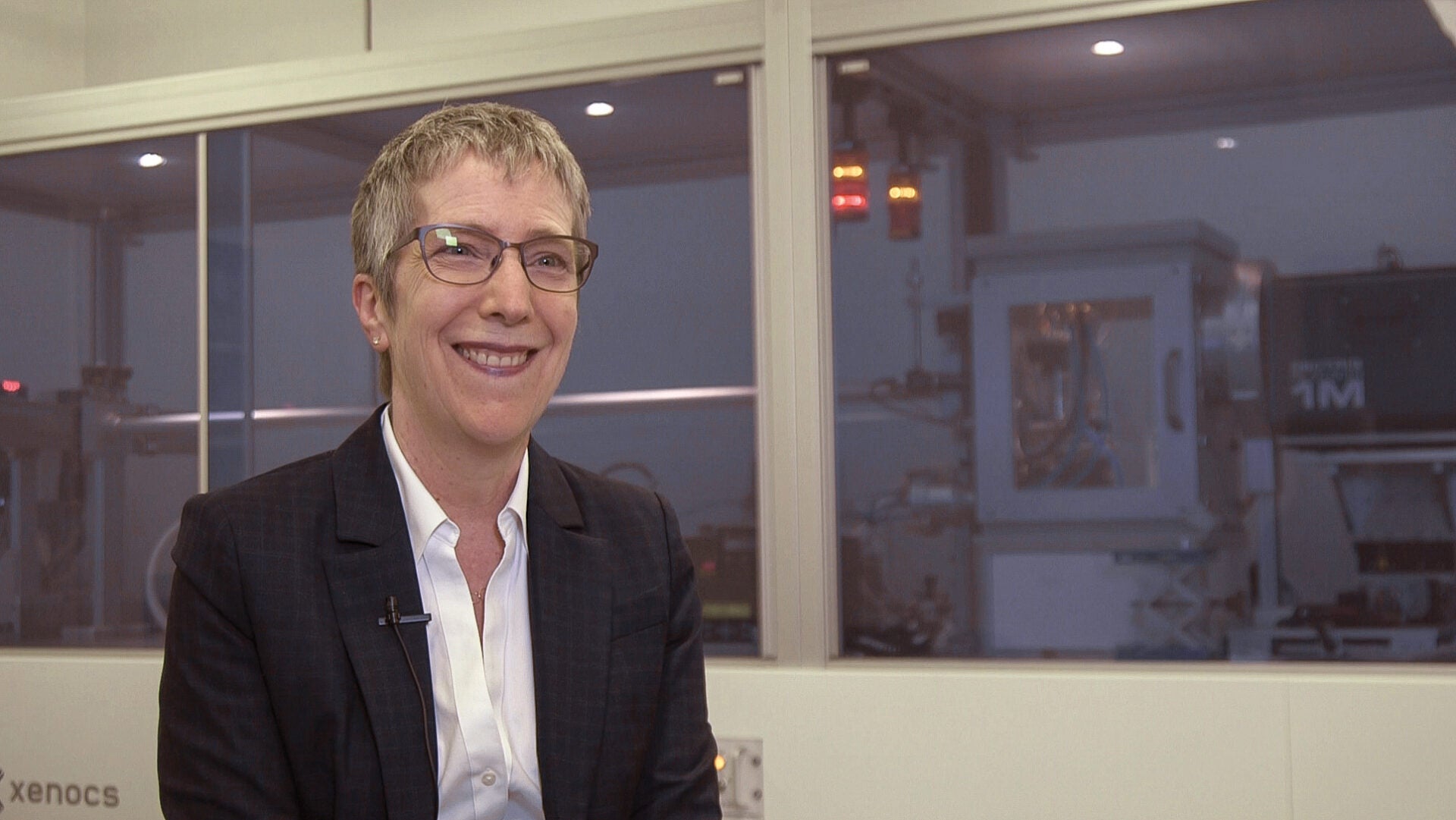
Building a Lighter Battery With Polymers
Electrifying the transportation sector is necessary to decrease global oil consumption and reduce the use of fossil fuels. By developing innovations that can improve efficiency, reliability, safety, durability, and affordability, Karen Winey is building the road to a fossil-free future.
Professor Karen Winey came to develop new kinds of polymers that could transform car batteries—as well as fuel cells and water purification—out of pure scientific curiosity.
“There were unanswered questions about acid- and ion-containing polymers. What are their nanoscale structures and transport properties? If we changed the polymers, could we alter their arrangement and improve properties?” she wondered.
The problem with lithium or sodium batteries is that they’re made of flammable liquids. While the liquid itself isn’t big or heavy, the extra circuitry and safety housing that ensures that the liquid doesn’t get too hot or pose other safety hazards tends to be.
Winey’s idea is to replace the liquid with a plastic. “If we could do that, it would be safer. It would be lighter weight, because you could reduce all that weight associated
with safety housing,” Winey explains. A lighter battery in cars, or even aerospace applications, could increase their energy efficiency.
The proton conductivity results from Winey’s NSF-funded research were published in a paper in Nature Materials in May 2018. Now she’s working to extend their insights to ion conductivity. Once she’s done that, she hopes to engage a major industry player to commercialize these new materials.
That said, this work takes time. She’s already been at this project for five years. “Materials innovation and integration is slow,” she says. “People say it takes 25 years to go from a new material idea to putting it into large-scale production. I’m really hoping that we can accelerate that pace.”
If batteries can be safer and cheaper, we could further incentivize the conversion from fossil fuels to renewables. “If you eliminate the flammable liquid, you’re going to increase the energy density, even if you don’t change anything else,” Winey says.
Winey is designing new kinds of polymers that will allow ions to move through them, namely solid polymer electrolytes (SPEs). Her group has already demonstrated that this new polymer design can have double the proton conductivity relative to a leading polymer. Extending this success from proton transport to ion transport is their current focus, so as to revolutionize the lithium-ion or sodium-ion batteries typically used in electric vehicles.
Policy Challenge
Ten countries have pledged to pursue 30 percent electric vehicle (EV) sales by 2030; several European countries and the province of British Columbia have announced a ban on the sale of new internal combustion vehicles for as early as 2030; and in the United States, California and nine other states have adopted zero emissions vehicles programs. Yet, affordability, range, and limited lithium supply for batteries continue to be roadblocks for EV adoption.
The Numbers
Globally, transportation accounts for 23 percent of our energy-related CO2 emissions. In the U.S., the transportation sector accounts for almost a third of GHG emissions. But the penetration of electric cars is still limited to less than 1 percent of the global car fleet today. By 2030, projected EV stock could cut demand for oil products in a range from 2.5 to 4.3 million barrels per day.
Further Reading
Materials innovation and integration is slow. People say it takes 25 years to go from a new material idea to putting it into large-scale production. I’m really hoping that we can accelerate that pace.
Karen Winey
